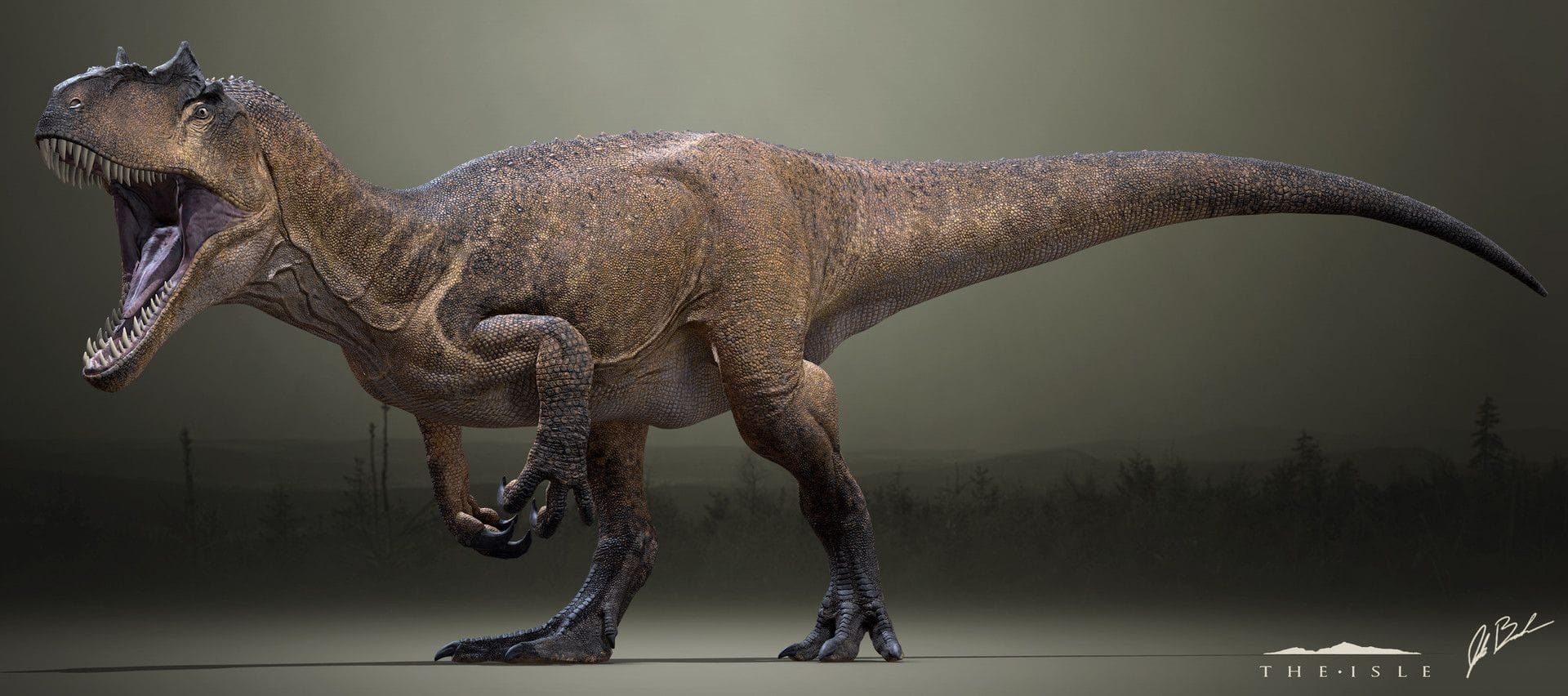Jurassic’s Fearsome Predator: Move Over, T-Rex!
Before Tyrannosaurus Rex claimed the title of “king” of the dinosaurs, another formidable predator ruled the Late Jurassic period: Allosaurus. This “different lizard,” so-named for its unique vertebrae, was a force to be reckoned with, leaving behind a rich fossil legacy that continues to captivate paleontologists and ignite imaginations worldwide.
Allosaurus: A Prehistoric Portrait
Temporal Range: Late Jurassic period (155 to 145 million years ago)
Location: Primarily Western North America (Morrison Formation)
Classification:
* Carnosaurian Theropod Dinosaur
* Family: Allosauridae
Etymology: “Different Lizard” from Greek words “allos” (different) and “sauros” (lizard), referring to its distinctive concave vertebrae.
Discovery: First described in 1877 by Othniel Charles Marsh. Early research was hindered by the numerous names initially assigned to Allosaurus specimens.
Built to Dominate: Unveiling Allosaurus’ Anatomy
Imagine a creature reaching lengths of up to 33 feet, with a muscular body that could easily overpower its prey—that was Allosaurus, a dinosaur that dominated the Late Jurassic period.
Size:
* Average Length: 8.5 meters (28 feet) for Allosaurus fragilis
* Largest Specimens: Estimated up to 9.7 meters (32 feet) long
* Weight: Approximately 1.7 metric tons (1.9 short tons)
Key Features:
* Skull: Large, lightweight, and robust, designed for delivering powerful bites.
* Teeth: Dozens of sharp, serrated teeth, constantly shed and replaced, made for tearing flesh. Some teeth measured up to four inches long!
* Limbs: Powerful hind limbs for bipedal locomotion and relatively small, three-fingered hands, likely used for grasping prey.
* Tail: Long and slightly sloping, providing balance and counterbalance.
Master Hunter: Deciphering Allosaurus’ Behavior
Allosaurus was the apex predator of its time, and its existence had a ripple effect on the Jurassic world.
- Diet: This powerful carnivore sat atop its food chain.
- Prey: Its menu likely included large herbivores such as Stegosaurus, Camptosaurus, and potentially even sauropods. Fossil evidence, like bite marks on Stegosaurus plates, provides clues to these epic clashes.
- Growth: Fossil evidence allows scientists to study Allosaurus growth stages, revealing that they reached near-adult size by 10–12 years old—a growth spurt that rivals a human going from toddler to teenager in a few short years!
- Lifespan: Allosaurus is estimated to have lived for approximately 25 years.
- Social Behavior: Evidence suggests that Allosaurus may have interacted in groups. Discoveries of multiple Allosaurus skeletons at single sites, sometimes with remains of their prey, are sparking debate about whether these dinosaurs engaged in pack hunting—a behavior that would have made them even more formidable.
- Injuries & Pathology: Fossils reveal healed injuries, indicating Allosaurus lived with the consequences of hunting and competition with other Allosaurus.
Allosaurus vs. Tyrannosaurus Rex: Clash of the Titans
While Allosaurus predates Tyrannosaurus Rex by millions of years, comparisons between these two apex predators are inevitable.
| Feature | Allosaurus | Tyrannosaurus Rex |
|---|---|---|
| Length | Up to 33 feet | Up to 40 feet |
| Weight | Up to 2 tons | Up to 8 tons |
| Skull | Long and narrow | Massive |
| Arms | Long and powerful | Tiny |
| Bite Force | Powerful | Bone-crushing |
Allosaurus, with its agility and powerful legs, likely relied on speed and ambush tactics, much like a lion today. Tyrannosaurus Rex, on the other hand, was a powerhouse—built for brute strength. Its colossal size and bone-crushing bite suggest a different hunting style, likely targeting large dinosaurs like Triceratops.
The Rise and Fall of a Dynasty
The reasons behind Allosaurus’ eventual decline remain a mystery. Some scientists suggest that changes in the environment, such as shifts in climate or plant life, may have impacted their prey availability and hunting grounds. Others propose that the emergence of new, larger predators, perhaps early tyrannosaurs, led to increased competition for resources. Whatever the cause, the reign of Allosaurus eventually came to an end.
Allosaurus in the Public Eye
From museum halls to the big screen, Allosaurus continues to captivate our imaginations.
- Documentaries: The groundbreaking series “Walking with Dinosaurs” brought Allosaurus to life in the episode “The Ballad of Big Al,” while other documentaries, such as “Planet Dinosaur,” continue to explore its predatory prowess.
- Films: Allosaurus has made appearances in films like “The Lost World: Jurassic Park” and “King Kong,” showcasing its formidable hunting abilities.
- Museums: Standing face-to-face with a real Allosaurus skeleton is a breathtaking experience. Museums such as the Museum of the Rockies, the Smithsonian, and the Natural History Museum in London house impressive Allosaurus displays.
Our researchers continue to make groundbreaking discoveries, such as the incredibly well-preserved ankylosaurus fossil and the fascinating anomalocaris fossil from the Cambrian Explosion, These findings, like the ongoing research into Allosaurus, remind us that the world of paleontology is constantly evolving, with each new discovery providing a clearer glimpse into the awe-inspiring history of life on Earth.
















